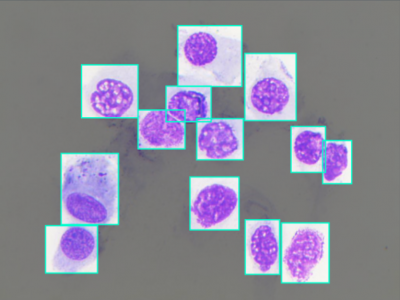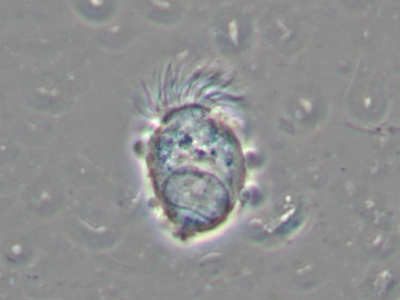Datasets
Standard Dataset
Eyes-defy-anemia
- Citation Author(s):
- Submitted by:
- Giovanni Dimauro
- Last updated:
- Fri, 01/03/2025 - 09:15
- DOI:
- 10.21227/t5s2-4j73
- Data Format:
- Links:
- License:
 10048 Views
10048 Views- Categories:
- Keywords:
Abstract
Anemia is a condition in which the oxygen-carrying capacity of red blood cells is insufficient to meet the body's physiological needs and affects billions of people worldwide. An early diagnosis of this disease could prevent the advancement of other disorders. Currently, traditional methods used to detect anemia consist of venipuncture, which requires a patient to frequently visit laboratories. Therefore, anemia diagnosis using noninvasive and cost effective methods is an open challenge. The pallor of the fingertips, palms, nail beds, and eye conjunctiva can be observed to establish whether a patient suffers from anemia.
In response to this challenge, we studied several algorithm devoted to anemia detection. We also collected a new dataset that contain eye conjunctiva photos of Indian and Italian patients, made available to the Scientific Community on IEEE Dataport.
Photos were captured by a smartphone equipped with a suitable device, whose details were previously presented in the literature by our team. Using photos of the eye, the palpebral or whole (palpebral and forniceal) conjunctiva were manually segmented.
The dataset Eyes-defy-anemia contains 218 images of eyes, in particular conjunctivas, which can be used for research on the diagnosis/estimation of anemia based on the pallor of conjunctiva.
The same images can be effectively used to study segmentation algorithms of conjunctivas or exposed parts of the sclera and iris. All images of the dataset are accompanied by segmented elements (palpebral, forniceal and palpebral + forniceal conjunctivas) useful both to directly correlate the pallor with the value of Hb, to assess the performance of segmentation algorithms. Each image is accompanied by essential information such as the value of Hb measured in the laboratory, age, and sex of the patient, listed in xlsx files.
The dataset Eyes-defy-anemia contains 218 images of eyes, in particular conjunctivas, which can be used for research on the diagnosis/estimation of anemia based on the pallor of conjunctiva.
The same images can be effectively used to study segmentation algorithms of conjunctivas or exposed parts of the sclera and iris. All images of the dataset are accompanied by segmented elements (palpebral, forniceal, and palpebral + forniceal conjunctivas) useful both to directly correlate the pallor with the value of Hb, and to assess the performance of segmentation algorithms. Each image is accompanied by essential information such as the value of Hb measured in the laboratory, age, and sex of the patient, listed in .xlsx files.
The images were captured with a Samsung S6 smartphone, equipped with a particular device that magnifies images, standardizes lighting, and eliminates the influence of ambient light. So, all the images were captured at the same distance and with the same white LED light. The description of the acquisition set is included in our papers linked to the dataset. The dataset was collected following the principles of the Declaration of Helsinki.
IMPORTANT NOTE: The segmentation of the parts of the eye was carried out by experienced personnel according to their own interpretation: every user of the images of the dataset can use our segmentations or use the whole images of the eye and segment them as he sees fit.
The acquisition and preparation of this dataset have required a lot of work without any remuneration. We provide it free of charge, but we ask those who intend to use our dataset the courtesy to cite the following papers (thanks in advance):
1. G. Dimauro, M. G. Camporeale, A. Dipalma, A. Guarini, R. Maglietta, Anaemia detection based on sclera and blood vessel colour estimation, Biomedical Signal Processing and Control, Volume 81, 2023, 104489, ISSN 1746-8094, https://doi.org/10.1016/j.bspc.2022.104489
2. Dimauro, G.; Caivano, D.; Di Pilato, P.; Dipalma, A.; Camporeale, M.G. A Systematic Mapping Study on Research in Anemia Assessment with Non-Invasive Devices. Appl. Sci. 2020, 10, 4804. https://doi.org/10.3390/app10144804
3. G. Dimauro, F. Girardi, D. Caivano, e L. N. Colizzi, «Personal Health E-Record - Toward an enabling Ambient Assisted Living Technology for communication and information sharing between patients and care providers», in Ambient Assisted Living, 2019, vol. 544. doi: 10.1007/978-3-030-05921-7_39.
4. Dimauro, G.; De Ruvo, S.; Di Terlizzi, F.; Ruggieri, A.; Volpe, V.; Colizzi, L.; Girardi, F. Estimate of Anemia with New Non-Invasive Systems—A Moment of Reflection. Electronics 2020, 9, 780. https://doi.org/10.3390/electronics9050780
The dataset Eyes-defy-anemia is divided into two folders, one for Italian patients and one for Indian patients.
The folder Italy contains 123 folders and the file Italy.xlsx. The name of the folder, from 1 to 123, refers to the number contained in the “Number” field of the file Italy.xlsx. Within each numbered folder there are 4 files:
- file name.jpg representing the original eye;
- forniceal_palpebral.png: image depicting the two conjunctives, segmented by hand;
- forniceal.png: image depicting the forniceal conjunctiva, segmented by hand;
- palpebral.png: image depicting the palpebral conjunctiva, segmented by hand.
The exception is folders labeled as 1, 35, 54, 58, 75, and 109; in fact, in these images of the eye the forniceal conjunctiva is not exposed, so in these folders only available 2 files:
- file name.jpg representing the original eye;
- palpebral.png: image depicting the palpebral conjunctiva, segmented by hand.
For patient 93 the level of Hgb has not been recorded, however, we consider it useful to make available to the scientific community the 4 images as listed above.
All the images of the eye were acquired in Bari (Italy).
The India folder contains 95 folders and the India.xls file.
The folder name, from 1 to 95, includes the number that corresponds to the “Number” field of the file India.xlsx.
Within each numbered folder there are 4 files:
- file name.jpg representing the original eye;
- forniceal_palpebral.png: image depicting the two conjunctivas, segmented by hand;
- forniceal.png: image depicting the forniceal conjunctiva, segmented by hand;
- palpebral.png: image depicting the palpebral conjunctiva, segmented by hand.
All images of the eye were acquired in Karapakkam, Chennai (India).
All the images obtained after segmentation are RGB images of equal size (1067 x 800 pixels).
More from this Author










Comments
I need it for my research work